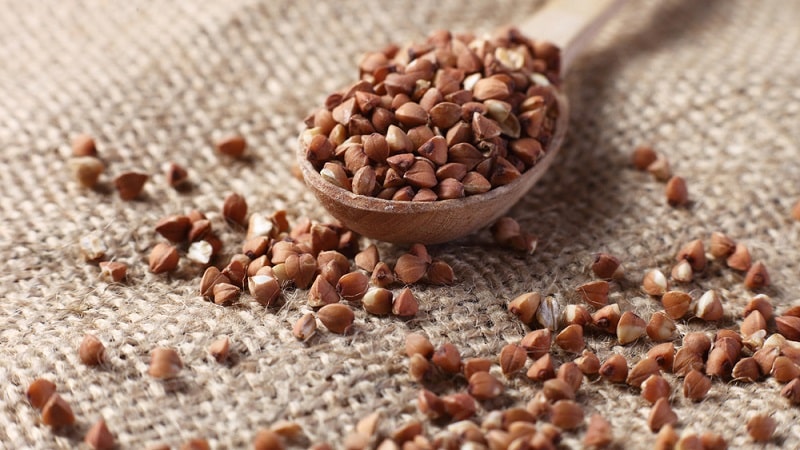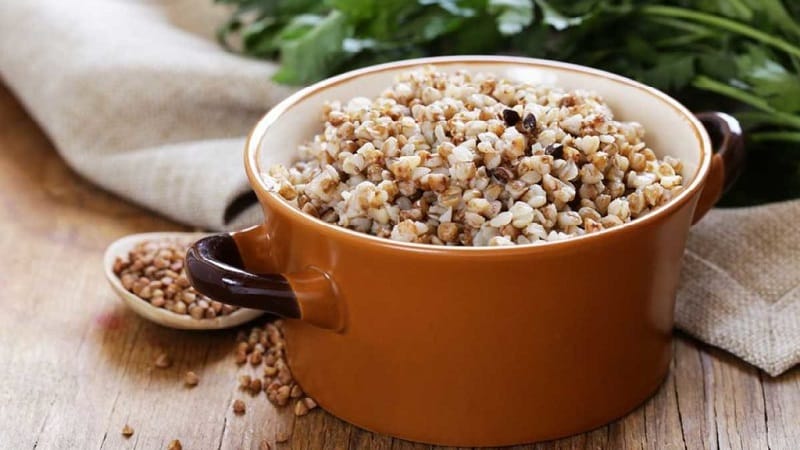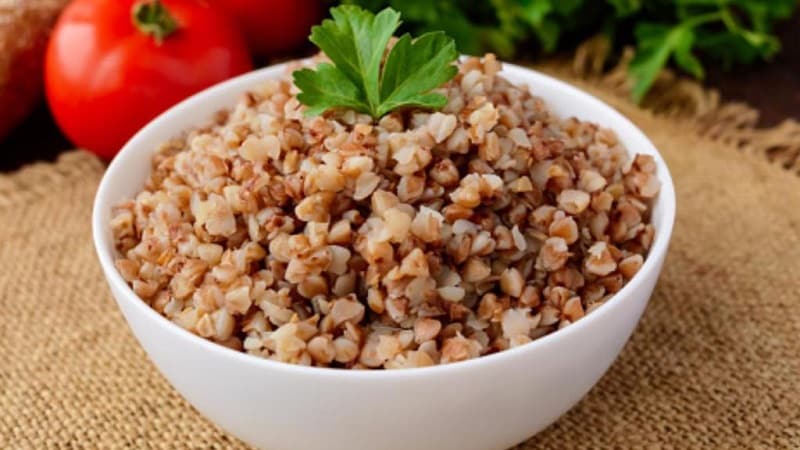Is there fiber in buckwheat and how much is there in boiled cereal?
According to WHO, people eat unacceptably little fiber. Products that contain it not only quickly saturate the body, but also prevent serious diseases.
Today we will tell you whether buckwheat contains fiber, what beneficial properties it has, and how much grain to include in your diet.
Chemical composition and nutritional value of buckwheat
Buckwheat is rich in minerals. Potassium, magnesium, manganese, copper, phosphorus in boiled buckwheat are well absorbed, because cereal grains contain little phytic acid:
- Potassium - 100 g of product contains 12.8% of the daily requirement. Normalizes blood pressure and regulates the functioning of the heart muscle.
- Magnesium - 37.5%. Regular consumption of buckwheat porridge normalizes sleep, relieves stress, and helps fight depression.
- Manganese - 50%. Normalizes metabolism in the body.
- Copper - 36%. Promotes collagen formation, iron absorption and plays an important role in energy production.
- Phosphorus - 30%. Participates in metabolic processes and bone tissue formation. However, excessive consumption of buckwheat, especially with a mono-diet, is fraught with the deposition of phosphorus in the bones to the detriment of calcium. This leads to their fragility. Therefore, it is important to combine buckwheat dishes with foods rich in calcium.

Cereals contain vitamins. Chief among them:
- Rutin - 30% of the norm. The main storage of rutin is the shell of grains, in which its amount is 17 times greater than the content in the kernel.Improves blood circulation, blood lipid profile, prevents the formation of blood clots, reduces capillary permeability.
- Thiamine - 28%. Improves energy and carbohydrate metabolism in the body. However, in porridge its content is much less. There is only one way out: do not cook, but steam the cereal.
- Vitamin E, or tocopherol, - 44%. Antioxidant, improves immunity, participates in collagen synthesis.
- A nicotinic acid - thirty%. Actively participates in redox processes, promotes tissue growth, stimulates the production of hormones, improves the functioning of the gastrointestinal tract, and prevents migraines.
Interesting things on the site:
Which is healthier: buckwheat, lentils or oatmeal?
Calorie content, dietary fat and glycemic index
Calorie content of buckwheat is about 308 kcal per 100 g of product, which is 20% of the daily value:
- Proteins - 10-12%. High-quality, balanced in amino acids, rich in essential lysine and arginine. In animals, buckwheat protein has been shown to be effective in lowering blood cholesterol, inhibiting the formation of gallstones, and reducing the risk of colon cancer.
- Fats - 3.0-3.5%. Such a low amount allows the cereal to be used as a dietary product.
- Buckwheat consists mainly of complex carbohydrates - up to 60%. It has a low glycemic index (50-60), which eliminates sudden surges in blood sugar and ensures a feeling of fullness for a long time.
How much fiber is in boiled buckwheat?
Fiber makes up 2.7% of the weight of cooked cereals and consists mainly of cellulose and lignin. Fiber is concentrated in the husks that cover the grain.The grain shell also contains digestion-resistant starch, which is classified as fiber.

The benefits of fiber for the human body
Fiber is a complex carbohydrate that cannot be digested in the stomach.. However, they play an important role in the digestion process. Fiber can be water-soluble or insoluble.
Soluble fibers (tar, hemicellulose, pectin and alginase) found in seaweed, fruits, legumes, oats, barley. Their main function is to normalize the intestinal microflora. Dissolving in water, they turn into a jelly-like mass, which serves as a haven for beneficial bacteria.
Insoluble fibers (lignin, cellulose) swell in water and partially dissolve. It is important to drink plenty of water when using them.
Lack of dietary fiber leads to:
- to an increase in blood glucose;
- constant feeling of hunger.
Fiber has a variety of effects on the body:
- Facilitates the movement of food through the intestines. The fibers form a “food lump” that the intestinal walls easily push forward.
- Prevents the formation of constipation, which leads to stagnation of blood in the veins of the pelvic area. And this is the cause of hemorrhoids. Constipation provokes intoxication of the body, stretches the walls of the large intestine, which affects the functioning of other digestive organs.
- Reduces the level of bad cholesterol in the blood, prevents the development of atherosclerosis.
- Improves immunity thanks to beneficial bacteria. They produce fatty acids that feed the cells lining the colon. The result is improved gut health and a reduced risk of colon cancer.
Fiber intake standards
For proper functioning of the body, a person should consume 25-30 g of fiber per day. For people engaged in heavy physical labor and athletes - up to 40 years.
Most people in the world consume no more than 20 grams of fiber per day.

The required amount of fiber can be obtained from regular food without resorting to the use of dietary supplements and other “fiber-enriched” high-priced products. For this:
- the diet includes buckwheat, oatmeal, and legumes;
- replace products containing simple carbohydrates (sugar, baked goods made from premium flour) with complex ones (bread made from wholemeal flour, pasta made from durum wheat);
- Prepare potatoes in their skins.
Nutritionists advise Eat at least 5 different vegetables and fruits per day.
Read also:
Does buckwheat help you lose weight and how to use it correctly?
The role of fiber in weight loss
Fiber - an assistant in the fight against obesity:
- Reduces the rate of carbohydrate processing in the stomach.
- Normalizes metabolism, promotes the growth of beneficial microflora.
- Water-soluble fibers swell in the stomach, creating a feeling of fullness that prevents you from overeating.
The consumption of fiber is accompanied by drinking at least 2 liters of water per day.
Conclusion
Fiber is a real “superfood” for humans: it maintains normal weight and blood pressure, regulates the functioning of the heart and digestive organs. Its use as part of healthy cereals, legumes, vegetables and fruits contributes to the full functioning of all systems and organs.
To get the required amount of fiber, it is important to change your diet, abandon refined foods in favor of plant foods. This will not only improve your health, but also reduce weight.